
The piper led honoured guests into the gymnasium, after which everyone in attendance remained standing for “Oh, Canada.”
And with that, the district’s newest school, Cuffman Street Elementary, began the time-honoured tradition of commemorating the nation’s war dead for Remembrance Day.
Students, staff, and members of the Royal Canadian Legion gathered at the school yesterday to honour the nation’s war dead and thank them for making the ultimate sacrifice to ensure the safety and freedoms Canadians enjoy today.
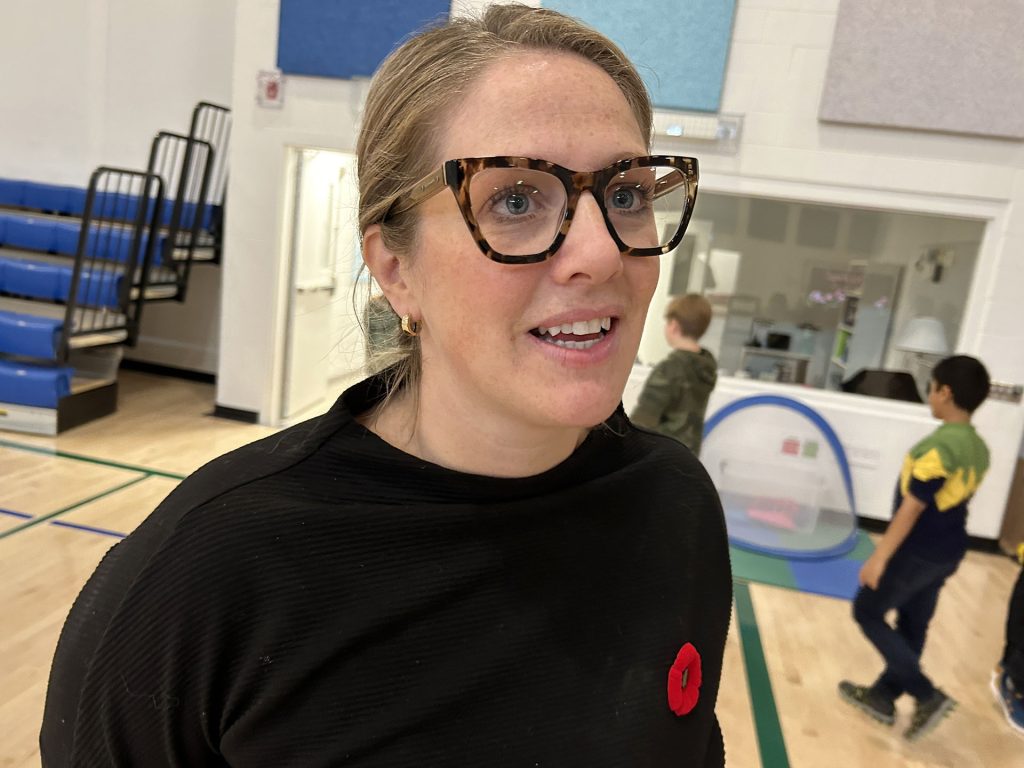
“I think it’s important for kids to know that there were people, including women and children, as well as men, who made the ultimate sacrifice,” said Cuffman Street Elementary Vice-Principal Mali Coulombe. “It was because of them that we’re able to live in a society that’s democratic and free and safe.”
Students learned about the origins of Remembrance Day in their classes in the days leading up to the ceremony, said Coulombe.
Remembrance Day—initially called Armistice Day—was first observed on November 11, 1919, one year after the end of the First World War. The date was chosen to mark the day guns fell silent in that war, with a moment of silence at 11 a.m. to mark the exact time the armistice took effect. “Remembrance Day” became the official name with adoption of the 1931 Armistice Day Act.
At Thursday’s ceremony, students read John McCrae’s classic First World War poem “In Flanders Fields”, in addition to experiencing other Remembrance Day traditions including the playing of “The Last Post,” the moment of silence, reveille, and a reading of the Act of Remembrance. Students ended the ceremony by placing commemorative wreaths on the wall and listening to “God Save the King.”
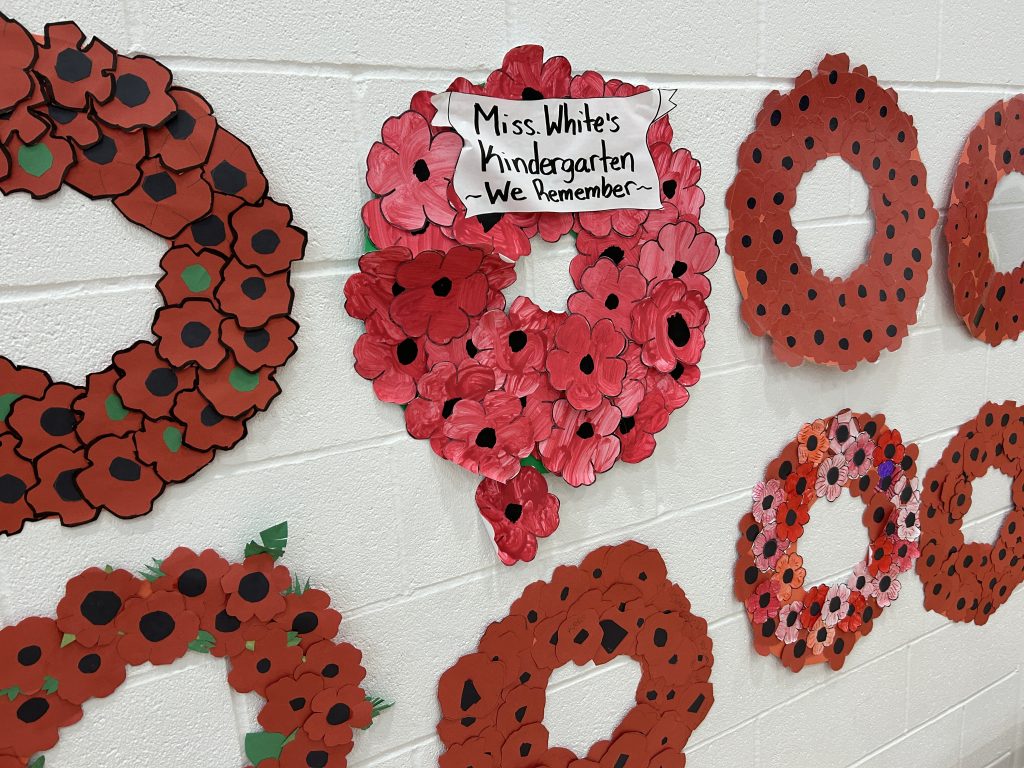
When teaching students about why Canadians celebrate Remembrance Day, Coulombe says teachers invite “students from other cultures to share their experience with Remembrance Day or ANZAC Day, or whatever day that they might have celebrated in their country or another culture.”
Many Commonwealth countries, including Canada, the United Kingdom and Australia call the holiday Remembrance Day, while others use different terms. Examples include ANZAC Day in New Zealand and Poppy Day in South Africa. The United States, which is not a Commonwealth country, calls the day Veterans Day.
Service and Sacrifice
“Remembrance Day is about the people that have come before us to ensure our freedoms, our liberties, and have sacrificed for that,” said Royal Canadian Legion Branch 4 member Noah Starr.
And Starr should know. He is a former army combat engineer who served a tour of duty in Afghanistan in 2007. He was inspired to serve in the military after seeing Princess Diana’s work with landmine survivors when he was a child. One of his duties in Afghanistan was rescuing people who had wandered into minefields.
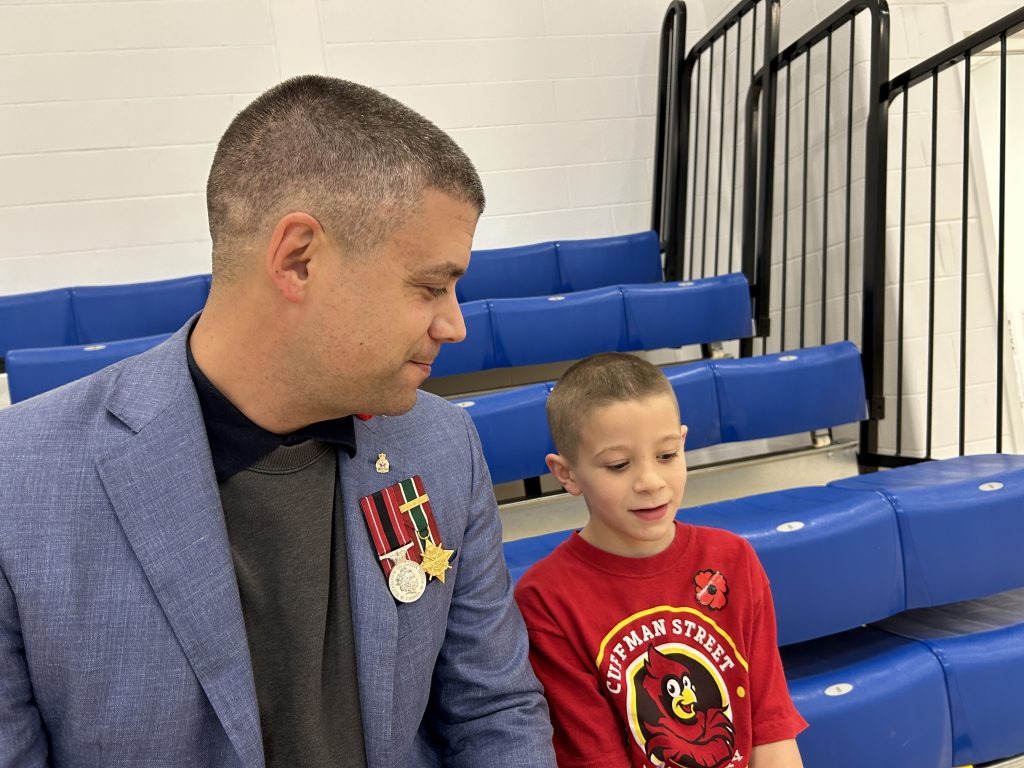

“Kids would be going to school, and they stepped on a landmine, and they’d lose their legs,” said Starr, whose sons Saul and Ari attend Cuffman. “So, it really inspired me to assist. That’s my service.”
Members of Fredericton’s Royal Canadian Legion Branch 4 also did their part to assist with Remembrance Day education. The organization runs a Remembrance Day poster and essay contest for students, in addition to the work they do in the community for veterans.
“We are there to help support our troops, and the funds that people donate to us all go to the veterans unit,” said Royal Canadian Legion Branch 4 member Bob Griffin, an army and air force veteran.
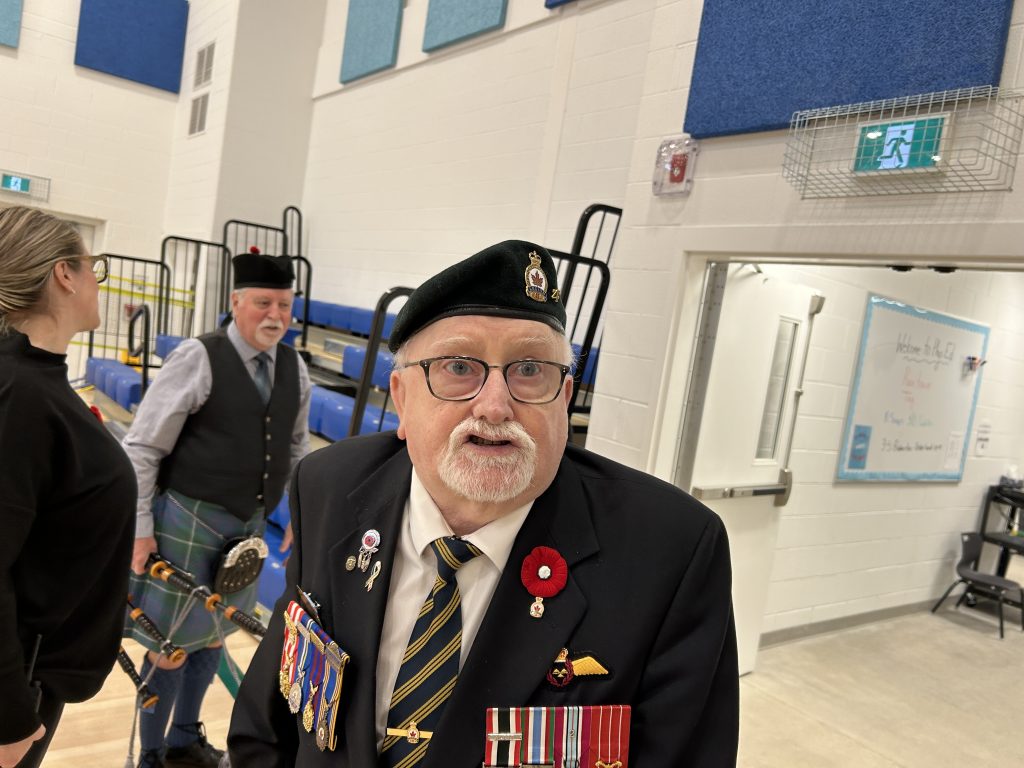
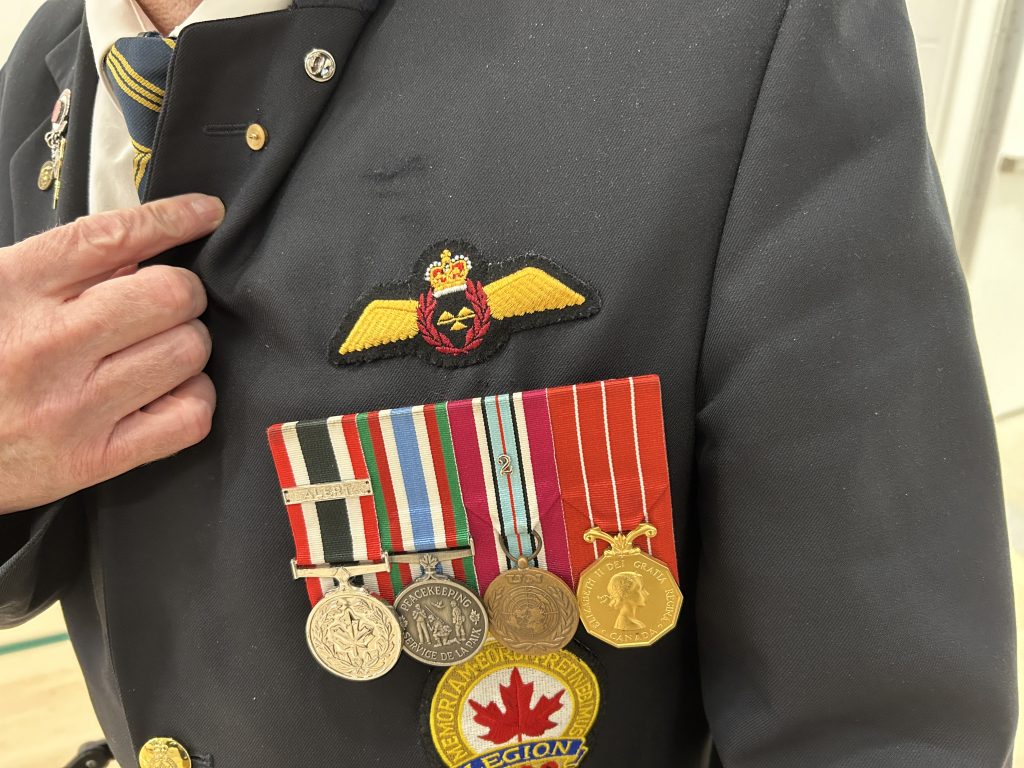
Students will certainly learn more history as they progress through school. However, lessons learned about Remembrance Day have already taken hold. “I’ve learned that you want to give respect to the ones that fought for our country,” said Grade 3 student Saul Starr.
Said Coulombe, “We’re really thrilled that we were able to host our very first Remembrance Day commemoration this year, and we do plan to carry this tradition on every single year as long as we’re here.”

